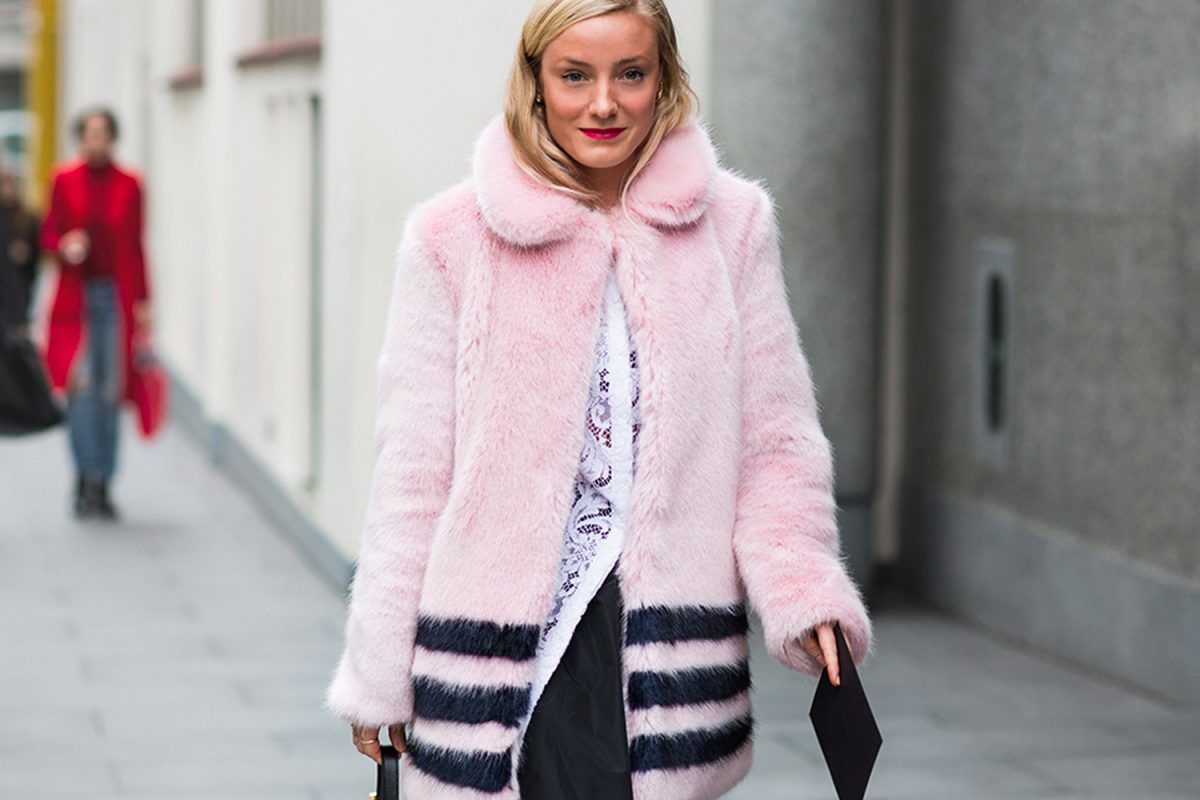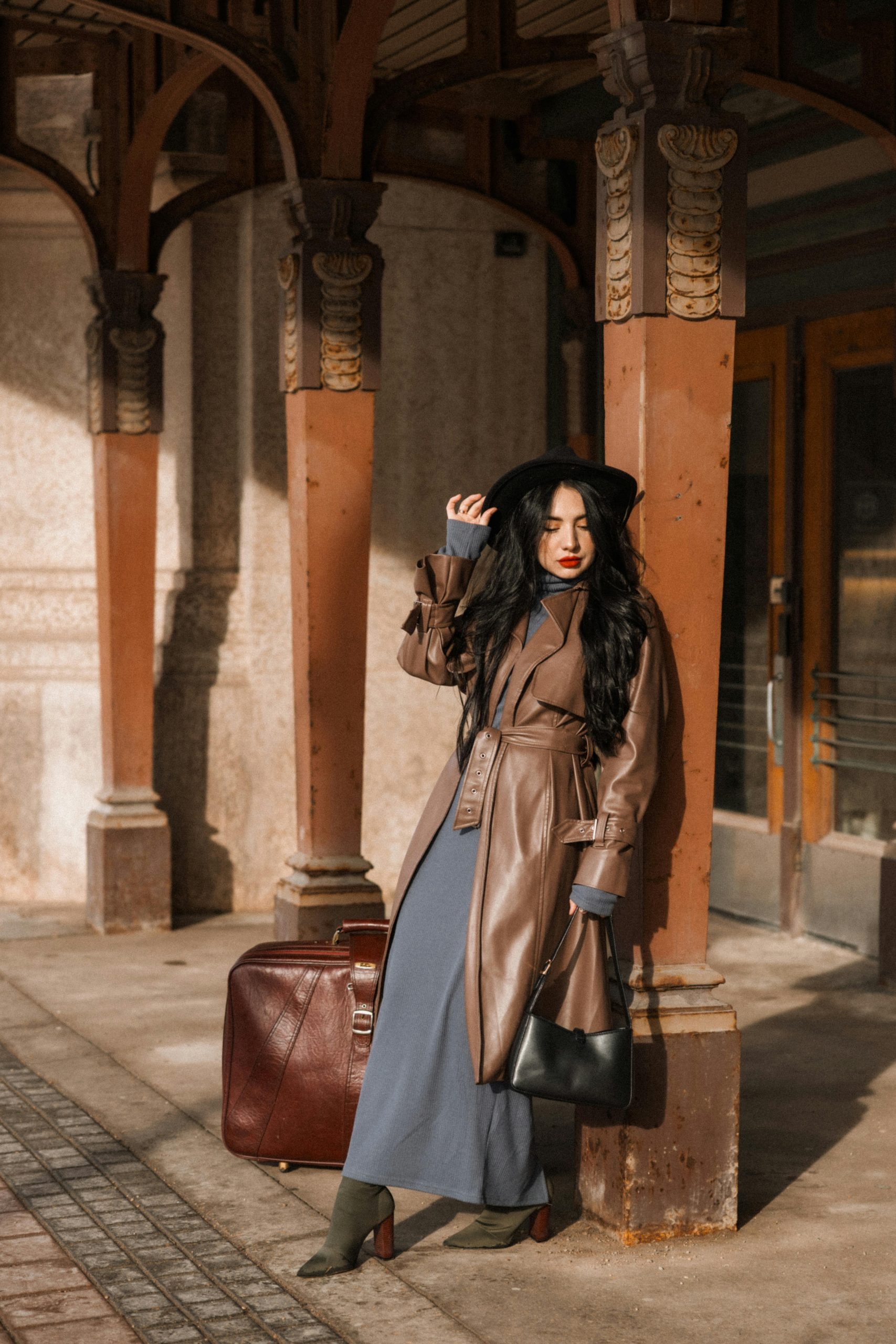
Why is wearing faux fur a controversial act?
This publication is also available in: Français
Deutsch
Italiano
Español
English (US)
More than ever, faux fur is trendy.
On the runways, in ready-to-wear stores, or on the street, padded coats, furry-looking jackets, and other accessories made of fake animal skins are everywhere. To the point where we no longer even ask ourselves what we’re wearing on our back.
Wearing faux fur gives us peace of mind. Because by donning a synthetic fleece scarf, a fluffy XXL coat, or a vegan fur collar jacket, we prevent the fur industry from progressing.
So, if killing animals for clothing is no longer a trivial act, what should we think of the most fashionable alternative at the moment, the imitation of animal fur?
Is it really the miracle solution to the animal skin market?
Answer in this article.
Animal fur: evolution of a controversial textile
Originally, when wearing a dead animal was the norm
As far back as men have known how to hunt, fur has existed. In prehistoric times, men would use the fur from their prey once hunted. Every part of the beast was reused for survival purposes. For example, the animal’s skin was used to protect from the cold. It had a utility.
But the world has evolved, and society was born. Man lost his primitive role to conform to societal norms. And fur did not escape fashion and its rules. Over the centuries, it became a symbol of wealth and power. In the 70s, it entered the Hollywood sphere to embody elegance and exuberance for those who wanted to wear it.
Despite the insurrections against it, fur continued to convince designers and their followers, because until 2015, 70% of fashion labels featured fur in their shows.
Evolution of consciences and limits of a market
Given the exploitation conditions and the treatment of real animal furs, collective consciousness has evolved. Because if a few years ago, wearing a dead animal on one’s back was considered a sign of wealth and a social distinction, today, it’s a cruel act, even repulsive.
And this paradigm shift could not have occurred without the involvement and the impactful actions of the international organization PETA (People for Ethical Treatment of Animals). In 1990, one campaign particularly made waves and moved the industry. The ad featured supermodels of the time posing nude with a striking slogan “I’d rather go naked than wear fur”.

At the same time, the cruelty linked to the exploitation and transformation of animals to obtain a mink coat or a fox scarf has set moral limits that consumers could no longer accept.
But it was in 2017, just 5 years ago, that things changed. That year, Gucci decided to no longer use animal fur for its collections. This announcement had a snowball effect, as other houses followed suit. As Arnaud Dubois from Ecopel confirms “For me, there is a before and after Gucci, because the anti-fur effect becomes the norm.”
All this has opened the breach on the reality of the fur industry, and made room for other forms of textiles serving as alternatives to animal skin in fashion.
Faux fur considered as an alternative
The commitment of the pioneering brand Stella McCartney has contributed to the boom of alternatives to real animal fur. Since the launch of her label in 2001, she has always followed her convictions and excluded the use of exotic skins, feathers, leathers, and furs in her collections.
The gradual withdrawal of the fur industry by haute couture houses has also allowed the fashion sphere to take a 90°C turn, offering a prime spot to vegan furs. The most recognized labels such as Gucci, Versace, or Prada have gradually followed the footsteps of those who had already taken a stand against animal exploitation in fashion.
It is also noteworthy that technological innovation has allowed faux fur to take on a new form, more modern, but also more realistic (almost too much so), soft, or fluffy. Indeed, vegan fur has never been more lifelike than it is today.
Ultimately, the transition to faux fur did not happen overnight. On the contrary, it is a process that has taken time, and which has resulted in a snowball effect in the fashion sphere, coupled with a collective awareness among consumers.
Wearing faux fur: an ecological reconsideration
For many, the faux fur option is the preferred choice when wanting to dress in a garment that looks as close as possible to real animal skin. And that’s true, but it seems that fashion pieces made of synthetic fibers are not without reproach either, especially when ecological arguments prove that we would be better off not buying them.
So, is faux fur our ally in limiting the advance against real fur?
Firstly, we can start by saying that faux fur pieces are not only found among major ethical designers. Yes, they are not just high-end creations made from labeled and traceable fibers or vegan textiles. Coats, jackets, and other accessories in “faux fur” can also be found at H&M, Primark, or Shein. In this case, we are in a context of overproduction that leads to the popularization of fast fashion.
Then, we can look at the composition of the faux fur itself. The majority of synthetic fur is made of polyester or acrylic, which are petroleum derivatives. And the resources to produce them are particularly energy-intensive, contributing to deforestation.
And speaking of petroleum means plastic fibers, which in turn raises issues of durability and recycling.
In short, faux fur is not ecologically responsible. It is akin to a traditional garment produced en masse, and its impact has consequences on the environment.
But, it’s not just that.
But also an ethical alternative
In an interview conducted by Modalova, Arnaud Dubois, head of communication at Ecopel, a Franco-Chinese company that produces luxury faux fur, explains that the choice of faux fur is primarily ethical, not ecological. “If you are a brand and want to make fur, choose faux fur, it’s better not to kill animals. If you want to be 100% ecological, opt for linen or hemp because synthetic materials are not ideal.”
Faux fur is polluting. It has an ecological impact. But, in its production, it attempts to solve a significant ethical problem, namely reducing the number of animals raised, imprisoned, skinned, dismembered for the mere needs of the fur industry that takes the skin to make coats, jackets, scarves, pom-pom hats, and other accessories.
Saving the lives of millions of animals, that’s the main issue of the alternative to fur. And with the weight of NGOs, public opinion, and the advancement of research and development, the major players in the fashion sector are also turning towards “no-fur”. To date, no less than 40 labels have renounced animal fur, with the most recent being Moncler and Dolce & Gabbana.


Conclusion: is wearing faux fur a controversial act?
Faux fur is not ecological, but it is ethical. It doesn’t meet all the criteria, but it has the merit of saving the lives of millions of animals.
Should we blame faux fur for that?
It depends on where we set the bar. Some will say why bother replacing one product with another that will still cause more harm to the planet, while others will say it’s already a commendable alternative.
But having done research for this article, a quote from a Kering group speaker resonated “the goal is not to constrain, but to convince”. It’s important to give consumers and brands a choice so that everyone can, step by step, embrace faux fur. And choice precisely comes through the proposition of these alternatives, which, even if not perfect today, pave the way for a new dynamic.
The fur industry is still in transition. Brands coexist with petrochemistry to move forward into tomorrow. Innovations are here, and research and development continue to progress in favor of increasingly bio-sourced, sustainable, and organic textiles. The challenge now is to convince brands to move in this direction.
Ecopel, as a witness, shares that they are working on the development of four more virtuous textile fibers namely Gatcha, recycled fibers, Kanekaron, or a 100% plant-based fiber made from corn.
💡 To go further on the subject of ethical fashion:
Sustainable Fashion: How to Consume It?
Eco-Friendly Luxury Brands: 5 Labels to Know
Feature Image: © Sandra Semburg



